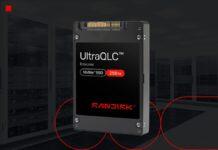🌿 Ruzu Non-Alcoholic Herbal Bitters
Ruzu Non-Alcoholic Herbal Bitters is a natural health supplement specially formulated to:
- ✅ Promote general wellness
- ✅ Detoxify the body
- ✅ Support the treatment of various ailments
Made from a powerful blend of 100% organic and medicinal herbs, Ruzu is completely alcohol-free, making it ideal for:
- 👪 All age groups
- 🌱 Health-conscious individuals
- 🌿 Anyone seeking non-alcoholic herbal remedies
Whether you're looking to boost your vitality, cleanse your system, or support healing the natural way, Ruzu Bitters offers a trusted herbal solution.
APC’s 40-Year Legacy: Why UPS Technology Is More Crucial Than Ever
By Naomisophyblog
The IT industry is once again undergoing a profound transformation. With the rise of real-time data processing and the integration of generative AI into daily tasks across homes, offices, and manufacturing plants, the stakes are higher than ever. Yet, amid all these advancements, one thing remains constant: the need for reliable power to keep everything running smoothly.
From desktop PCs to data centers and intricate manufacturing systems, dependable power is essential. This is where the uninterruptible power supply (UPS) becomes indispensable.
Often overlooked, the UPS plays a vital role in IT infrastructure. It quietly ensures that devices keep running during power outages, giving users time to save work and safely shut down equipment. Additionally, it shields devices from power fluctuations like surges and brownouts that can cause significant damage.
40 Years of Innovation
This year marks a significant milestone for APC as it celebrates 40 years since introducing its first UPS in 1984. The initial model, the 750, utilized a lead-acid battery to provide surge protection and backup power for PCs, LANs, and workstations. However, its high development cost led to a steep price, limiting its success.
The subsequent model, the 450AT+, was more affordable and compact, setting the foundation for APC’s future success with the Back-UPS series. Since then, APC has consistently innovated, making its UPS technology increasingly vital in today’s IT landscape. Recognizing the value of this technology, Schneider Electric acquired APC in 2007.
Today, with data center growth projected to double by 2030, the demand for reliable power is more pressing than ever. Several key trends highlight the growing need for resilient IT infrastructure supported by UPS technology.
AI Driving Data Center Demand
The adoption of generative AI across industries, from healthcare to logistics, is placing unprecedented pressure on IT infrastructure. AI applications require massive data processing, which in turn increases the demand for both compute capacity and electrical power in data centers. Goldman Sachs predicts a 160% increase in data center power demand by 2030. As AI becomes central to business operations, unplanned downtime due to power issues can have severe consequences. UPS technology mitigates this risk by ensuring continuous power supply, preventing disruptions that could have life-threatening implications, such as in healthcare or transportation.
The Sustainability Challenge
The growing power demands come at a time when IT and data center managers face increasing pressure to decarbonize operations. U.S. data center power consumption is expected to double by 2030, prompting operators to seek solutions that balance power needs with sustainability goals.
Modern UPS systems contribute to this effort by leveraging energy-efficient technology and materials, such as recycled plastics and metals. Additionally, some UPS models now allow for modular upgrades, reducing waste and extending the lifespan of equipment.
Lithium-ion batteries, which last longer and require less maintenance than traditional lead-acid batteries, further enhance sustainability while supporting resilient infrastructure.
Accelerating Edge Computing
The demand for real-time data processing is driving rapid growth in edge computing, where data processing occurs closer to the source. Worldwide spending on edge computing is expected to reach $232 billion by the end of 2024.
Edge infrastructures, often part of hybrid IT environments, are crucial for supporting critical applications, making them as important as large data centers. UPS technology is essential for these sites, providing power protection and enabling remote monitoring and management to minimize downtime.
The 2024 Uptime Institute survey indicates that power disruptions are the leading cause of outages, underscoring the importance of reliable UPS systems.
A Resilient Future with Schneider Electric
As the demands on IT infrastructure grow, data center and IT managers can rely on trusted partners like Schneider Electric. With decades of experience in IT infrastructure solutions, Schneider Electric continues to innovate, supporting both resilience and sustainability.
Schneider Electric collaborates with a global network of 150,000 partners to provide UPS solutions and related technologies, ensuring secure and reliable operations for customers worldwide.
Looking ahead, Schneider Electric remains committed to advancing eco-friendly technologies in response to the increasing frequency and duration of power outages. By prioritizing innovation, the company aims to deliver reliable, secure, and sustainable power solutions that enable organizations to thrive in a digital future shaped by generative AI and other cutting-edge applications.
Read Also:Schneider Electric Announces Evolution of EcoStruxure IT with Model Based, Automated Sustainability Metric Reporting
Explore Schneider Electric’s 40-year journey of innovation, packed with resources to help organizations enhance IT infrastructure reliability in a connected world.

















